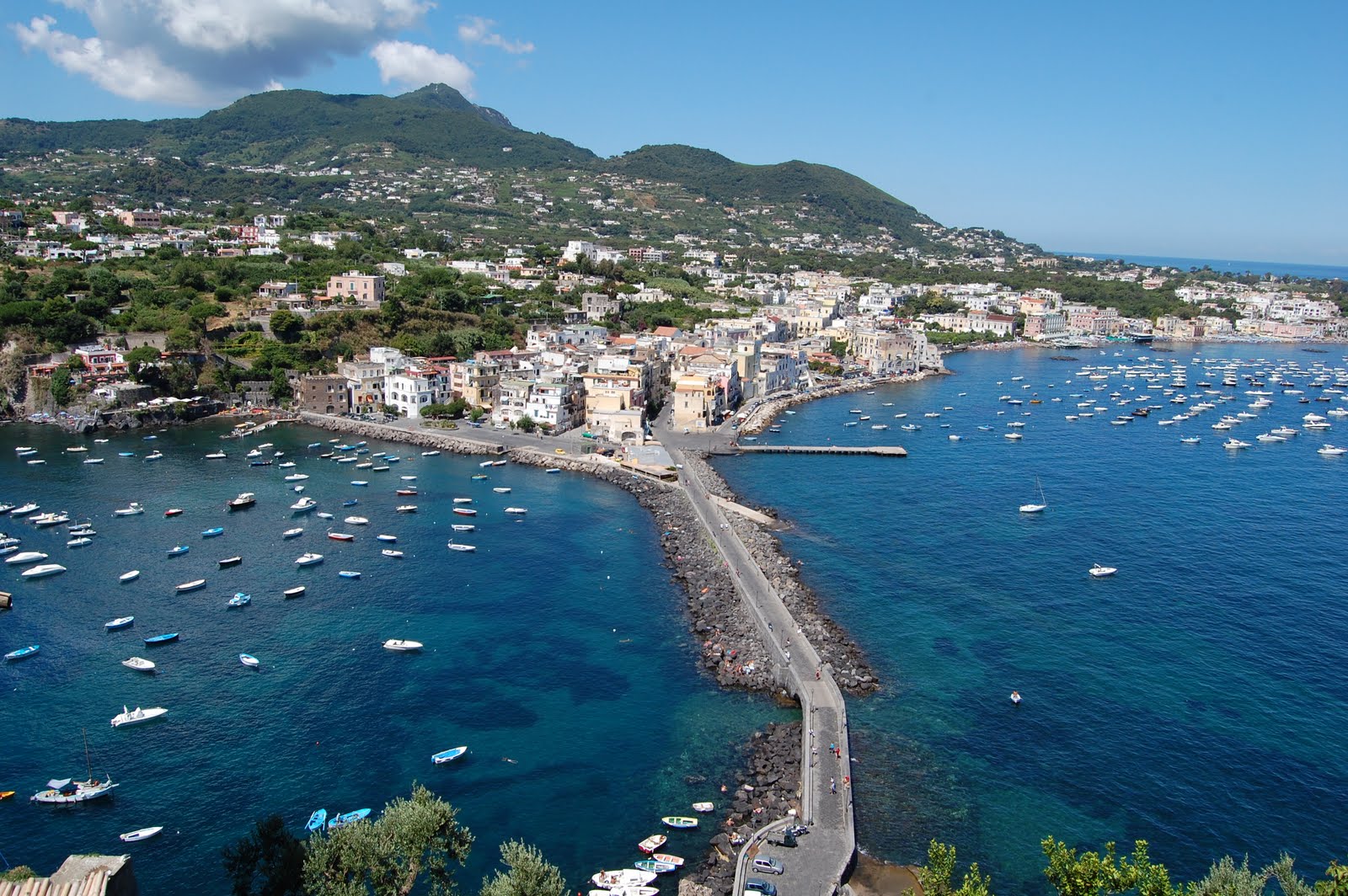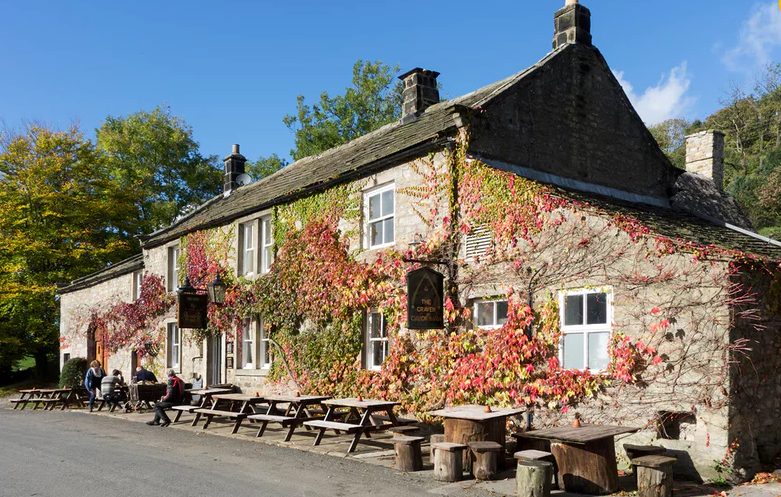
1. Grassington, Yorkshire dales
Length: 11 miles
Time: 5½ hours
Start/finish: Grassington National Park Centre
Grade: Moderate
Refuel: Craven Arms, Appletreewick
Anyone who grows up in or around the Yorkshire dales ends up carrying it with them. There’s something about the crumpled-duvet landscapes of emerald field and heathery fell, about encountering its sudden, Shire-like valleys threaded with muscular peat rivers, about stumbling across a ruined abbey at dusk or drinking well-earned beers by pub fires that forever sticks in the head and the heart.
One of the national park’s greatest pubs has to be the Craven Arms at Appletreewick (mains from £8.95). Tucked into the fell above the river Wharfe, and the halfway point of a wonderful 11-mile circular walk from Grassington, it could go toe to toe with anywhere for the title of “perfect country pub”. Its standout feature is the “cruck barn” at the back, built by the owner using traditional materials and the first in the dale for 400 years.
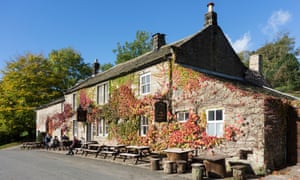
Reaching the Craven Arms from the village of Grassington is akin to drinking a neat shot of the dales. Cross the river by the photogenic Linton Falls before climbing up to the gorgeous hamlet of Thorpe through fields threaded with dry-stone walls. Carry on through meadows where lapwings “pee-wit” and a stray foot may startle a hare into pulsing flight, to reach Burnsall and what has to be the most photographed bridge in the dales. Cross the river and follows signs for Appletreewick, and find the Craven Arms close to the Mock Beggar Hall, an old monastic grange that testifies to the village’s connection to nearby Bolton Abbey. Below the pub is a fantastic wild swimming spot.
The five and half miles back are most atmospheric if you time it to arrive in Grassington at dusk. Return to Burnsall and then take the historic riverside path north-west, crossing the suspension bridge at Hebden. Along the way enjoy woodsmoke from farmhouse chimneys; the quiet grandeur of autumnal trees bronzed by late light, ground mist around their roots; the gurgling rush and calm of the river; and the unforgettable, far-reaching fells, alive with the bleats of Swaledale sheep, gradually bruising into black.
2. Nidd Gorge, North Yorkshire
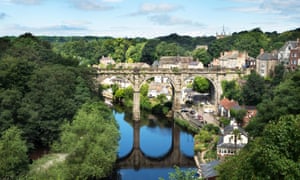
Length: 7½ miles
Time: 3½ hours
Start/finish: Sustrans 67 junction with Bilton Lane
Grade: Moderate
Refuel: Carriages, Knaresborough
Autumn’s true glories are experienced through trees: the turning of leaves from greens to fiery yellows and reds; the wine-black clusters of berries and nuts on drooping branches; the musty smell of leaf litter as shafts of sun streak the damp earth.
A mile from my home on the northern edge of Harrogate, a thickly wooded river gorge provides the perfect stage to witness the splendour of autumn.
Enter the Nidd Gorge by following the Sustrans cycleway 67 from Bilton to the defunct Victorian viaduct that spans the river. After taking in the viaduct’s views, descend and wind along for four miles of sylvan splendour to Knaresborough, slowing to the river’s pace and stepping through the dioramas of alder, oak, beech, chestnut, birch and waterside pines that lean over the mirror-like surface to create breathtaking patterns with their reflections.
There are kingfishers here; buzzards and dippers too. Once I watched for 10 minutes as an otter threaded its way between bank, tree root and water, fishing for trout. Expect some mysterious, melancholic human traces, too – weirs and old mills reduced to rubble, strange caves – before the stunning reveal of Knaresborough’s commanding (and still-working) railway viaduct, the town’s tumble of handsome houses and, perched above, the ruins of Knaresborough Castle.
Walkers can break the circuit at Carriages (£10.95 for two courses at lunchtime), where the food is plentiful and delicious.
The return loops back along the Beryl Burton cycleway (Sustrans 636) and above the trees, on to the high ground from where Cromwell’s cannons pounded the royalist castle. Skirting the woods – stopping to pick sloes and crab apples – you may see roe deer, reminders of when this area was part of the medieval Royal Hunting Forest of Knaresborough.
Passing 17th-century Bilton Hall, follow the old track through the furrowed farm fields and the flaming trees back to the start, completing an idyllic autumn circuit.
3. Llyn peninsula, Gwynedd
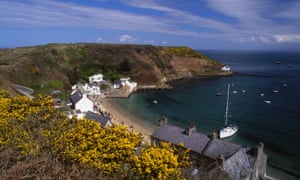
Length: 4 miles
Time: 2 hours
Start/finish: Edern village
Grade: Easy
Refuel: Ty Coch tavern, Porthdinllaen
The Ty Coch tavern (mains from £9.95), in Porthdinllaen on the old pilgrim route to Bardsey Island, exercises an inexorable pull for pilgrims of every creed as walkers, sailors, fishermen, golfers and lovers of craft beers converge on this beachfront pub.
The village used to be a substantial community, with a sailmaker and a coaching inn for travellers sailing to Dublin. Today, a handful of fishermen catch whelks, scallops and lobsters, and the Ty Coch is the only pub. The landlord, Stuart Webley and his family are the beach’s last permanent residents.
An excellent circular (clockwise) walk to Porthdinllaen starts in the inland village of Edern (park by the Ship Inn). Take the footpath from the wooden footbridge next to the butcher’s shop along the western bank of the Afon Geirch. Head north in the direction of the coast. Cross the stream in front of Porthdynllaen Farm and follow it until you meet the farm track, then hard left until you pick up the footpath again on the other side of the farmyard.
Pass by the campsite at the farm and follow the river, now on its eastern bank, to the rocky beach at Abergeirch. Stone steps will take you to the cliff path – the Wales Coast Path. A colony of seals live off the rocks at Life Boat Bay. When mackerel are in season it’s not unusual to see a pod of dolphins from the cliff. Rejoin the beach at Life Boat Bay and follow the coastal path to the Ty Coch.
Proud to be a chip-free zone, the Ty Coch provides carbs in a superb list of bottled craft beers, two local tap beers and a revolving guest ale. The saloon is the beach, with a great view of Anglesey, though you’d be surprised how many people can cram inside when it rains.
After lunch continue along the beach to Morfa Nefyn, enjoying superb views of the Yr Eifl hills until the road meets the beach below the Cliffs pub. Walk straight over at the crossroads, then turn right at the T-junction and take the footpath along the B4417 back into Edern. An alternative that avoids the road is to cut back across the golf course and follow the coastal path back to Abergeirch. To do this turn right (past Café Porth Dinllaen) instead of heading straight at the crossroads.
4. Lingmoor Fell, Lake District

Length: 5 miles
Time: 3 hours
Start/finish: Elterwater village
Grade: Moderate
Refuel: The Brittania Inn
Lingmoor Fell, at 469m, is a modest climb from Elterwater village but steep enough to give a sense of achievement. It stands alone, affording superb views beyond Elterwater to Windermere. Head south out of the village, crossing the stone bridge over Great Langdale Beck and turn right and follow the lane (marked “Coniston challenging option” for cycles) alongside Sawrey’s Wood. It soon becomes a rough track, and at Dale End Farm (about a mile from the start) you will see the gate up on to the fell.
The trail is the old quarry path. A slate seat below the summit affords lovely views and you could follow this path to just below the summit, but I would follow the path along the ridge wall for a while instead and enjoy the views of Great Carrs, Wet Side Edge and Harter Fell. Descend by the same route and enjoy the views of Little Langdale Tarn. There is an alternative track that descends steeply into Sawrey’s Wood and begins a little to the east of the quarry path, though it can be tricky to spot. Do take a map!
The Brittania Inn (mains from £12) at Elterwater jolts you back 500 years with its low roof and whitewashed facade. Anna and Andrew Parker have run it since 1978 and the welcome is always warm, the food substantial. There is a great range of ales with names such as Neddy Goggle, and several brewed for the pub, including Britannia Gold.
5. Hay-on-Wye to Rhydspence, Wye Valley
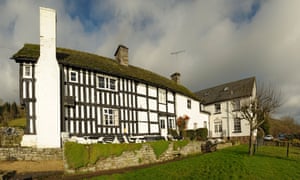
Length: 6 miles
Time: 2½ hours
Start/finish: Offa’s Dyke footpath sign on the right after the main bridge out of town
Grade: Moderate
Refuel: The Rhydspence Inn, Whitney-on-Wye
Setting out from the famous book town of Hay-on-Wye, this six-mile stroll starts along the western edge of the Wye. Immediately after the bridge, follow the path through an elevated riverine copse before dropping down to the banks. After a couple of miles along the valley floor, the path reaches Bronydd Farm. To avoid the busy A438, leave Offa’s Dyke here and head up to the steep pitch behind the roadside hamlet of Bronydd. The path eventually brings you out at Bettws Dingle, where you turn briefly west before heading back on yourself towards the river. Zigzagging along the contours of the hills will take you past Upper Bettws farm and on to Old House. Just before reaching the latter, bend right along the track and down through an old wood. Then it’s all downhill to the pub.
A splendid 14th-century coaching house, the Rhydspence Inn has been welcoming footsore travellers for centuries. The exterior is a gorgeous assemblage of squiggly timber beams and off-kilter windows. If a building could be happily sozzled, this age-old public house would be. At the rear, the garden slopes down towards the Wye: a perfect spot for a pint on a sunny afternoon. Along the southern perimeter, a brook marks the England-Wales border, its narrow banks keeping St George and the Dragon at arm’s length.
Inside, the atmosphere of a traditional country pub lives on, from the heavy oak front door and creaking corridors to the cubbyhole bar and open-hearth fire. Upstairs are seven bedrooms with delightful views.
The bar menu features all the pub favourites – steak and ale pie, lasagne, scampi, fish and chips, at around £10 – alongside baguettes and ciabatta rolls at lunchtime. The restaurant menu is a little more ambitious, with starters that include Thai fish cakes and smoked duck breast salad. For mains, the options are fairly meat-heavy (this is hill farmers’ country, after all). Welsh lamb casserole (£15) is a favourite.
6. Llyn y Fan Fach, Brecon Beacons

Length: 6½ miles
Time: 3 hours
Start/finish: The free car park outside Llanddeusant village
Grade: Moderate
Refuel: The Tanners Arms, Defynnog
In the western Brecon Beacons, Llyn y Fan Fach (literally “lake of the small beacon-hill”) is an overlooked gem. From the village, follow a steep stony track for about 40 minutes to the lip of the now-dammed glacial lake. Encircled above by a searing escarpment, this magnificent oval-shaped expanse of cold cobalt blue is rich in myth and mystery (the most popular folktale tells of a beautiful fairy girl rising from the lake and begetting three sons who would become famed physicians).
A looping path climbs westwards up the ridge above the lake and eventually round to the summit of Picws Du. On a clear day, the panoramic views are some of the best in Wales: Swansea Bay to the south, then the Pembrokeshire coast, the Epynt northward and then eastwards over the Brecon Beacons.
Continue along to the spur of Fan Foel and then down to the gully on the far side, where a faint path leads you off the mountain and back to the lake below. For a longer walk, carry on after Fan Foel to Fan Brycheiniog and then descend to a second, larger glacial lake (Llyn y Fan Fawr). Loop around the water’s southern edge and then circle back along peaty moorland to the start.
Because of the walk’s remoteness, the nearest pubs all require a short drive. For a classic locals’ hang-out, you can’t beat the Tanners Arms in nearby Defynnog. Run by the ever-amiable Brenda and her chef-husband Alan, this cosy freehouse is a particular dream for craft ale and cider lovers. The walls are decorated with hundreds of pump clips, each denoting a bygone barrel consumed on the premises. Current specials on the cider board include the joyous-sounding Hairy Ferret, Crazy Goat and Farmer Jim’s Rootin Tootin. There’s even a zero-alcohol “beer” for dogs too (chicken or beef flavours, £2 a bottle).
Food is served either in the bar area or in a smart dining room next door, on the walls of which hang prints by local photographer Martin Dyde.
Given the pub’s location in the heart of rural Wales, entrées of Chinese duck spring rolls, Spanish dried meats, Japanese miso soup and onion bhajis speak to a surprisingly cosmopolitan palate. There’s no messing with the main dishes, which are solid, appetite-appeasing walkers’ fare from start to finish, such as lamb shank and pumpkin curry pie.
7 .Canvey Island circuit, Essex

Length: 13 miles
Time: 5 hours
Start/finish: Benfleet station
Grade: Easy
Refuel: Lobster Smack, Haven Road
To access this pleasant but slightly desolate former holiday location, take the train to Benfleet, from where you can walk across the bridge on to Canvey Island, home to Dr Feelgood and recently chronicled in Julian Temple’s film Oil City Confidential. Turn right straight after the causeway, and follow the path that takes you round the island anti-clockwise. This leads first to empty grassland edged by deep narrow inlets marking the edge of the island and criss-crossed by drainage ditches. The walk is straightforward, easy to follow and surprisingly varied.
Keep the water to your right and eventually arrive at the Thames by the oil storage depot. Great jetties like a giant’s extended fingers reach out into the river all around you, and then, having probably not seen a soul all morning, you arrive at a caravan park and then a pub in quick succession. You are just about halfway round the island by now. The pub is the Lobster Smack, which is pretty and wooden from the outside and cosy inside, with decent pub grub. I had the beer-battered cod and chips (£9.79) accompanied by a pint of Blue Moon (without a slice of orange).
If the landscape so far reminds you of every TV adaptation you’ve ever seen of Great Expectations and you’ve found it hard to shake off the image of Abel Magwitch being pursued across the mudflats, it’s not surprising, because the Lobster Smack is the inn in the Dickens novel.
Restored, press on round the island, following the sea wall with its vibrant graffiti, past the lure of amusement arcades and a small beach. Canvey became a fashionable place for Londoners to visit during the Victorian era after its air was promoted as having healing properties.
Turning away from the Thames, continue round to the creeks and an old harbour, a dangerous eerie empty landscape of mud and brown water. Then there are new developments of large detached houses, a golf course and the view back to Hadleigh Country Park and the wooded Benfleet Downs on the mainland, a world away from this treeless, flat, low-lying island. Return to the causeway to Benfleet station in the near distance.
8. Richmond to Hampton Court, Surrey
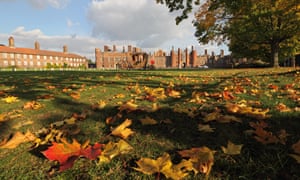
Length: 8 miles
Time: 4 hours
Start: Richmond station
Finish: Hampton Court station
Grade: Easy
Refuel: The Boaters Inn, Kingston upon Thames
Not everyone associates Richmond with rock’n’roll, but exit Richmond station using the main entrance and straight across the road is the site of the Station Hotel, where the Crawdaddy Club debuted a host of famous acts during the 1960s, including the Rolling Stones.
Cross the road at the traffic lights and go down Old Station Passage. Turn left at the end and walk a few yards until you get to Richmond Green. Cross the common, using the paths on a diagonally right direction, aiming for Old Palace Lane. Follow Old Palace Lane until you reach the river and turn left. Walk with the river on your right and go under Richmond Bridge. Continue with the river on your right as you leave the town behind and you enter countryside.
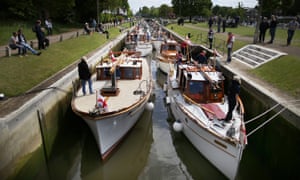
The river begins a gentle curve to the right and you’ll walk past Petersham Meadows, with its herd of cows. Enjoy the sights, sounds and smell of the river as you head towards Ham House. You’ll be about three miles into your eight-mile walk now. With the river still on your right, not far past Ham House, you see Eel Pie Island in the middle of the river. The island was the site of the now legendary Eel Pie Island Hotel where artists including the Rolling Stones, The Who, Rod Stewart and Eric Clapton performed regularly throughout the 1960s.
Keep pushing on past Teddington Lock and with the suburbs of Kingston emerging, you will soon arrive at Canbury Gardens riverside park. Here you’ll find the Boaters Inn. You’ve now walked nearly five miles and will have earned something to eat and drink. I had vegetarian kedgeree with hard-boiled egg, marinated tofu, curried rice, red chilli, parsley, spring onion and cashews (£12). Looking around, the beer-battered cod (£12.50) seemed very popular. There’s a constantly changing parade of local beers and I washed my meal down with a pint of Dark Star Hophead.
After leaving the pub, stick to the riverside with the river still on your right until you come to Kingston Bridge. Cross the bridge and turn immediately left, heading down to the riverbank, with the river on your left. Continue walking alongside the river as it makes its majestic sedate way to Hampton Court Palace. This part of the walk is approximately three miles. You can’t help but be impressed with the history on show here (but be aware that entry to the palace and gardens costs a hefty £19.80). Cross over the river once more on Hampton Court Bridge and Hampton Court station, with its regular trains back to Richmond or London’s Waterloo, is right in front of you.
9. Glen Finglas, Trossachs
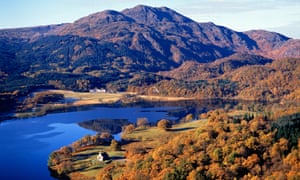
Length: 4 miles
Time: 2 hours
Start/finish: Woodland Trust car park, A821
Grade: Easy
Refuel: The Byre Inn, Brig o’Turk
In the 20 years since Glen Finglas was removed from the grasp of commercial forestry, I have watched with wonder as it has transformed into burgeoning native woodland. Autumn is its finest hour. The scented calm of old oakwood greets you at once at the Woodland Trust centre, where visitors can browse through leaflets giving details of colour-coded walks. This one is called the Brig o’Turk Loop and involves a climb on good paths up the lower slopes of hills that reach 600m. As the oak thins out, a self-sown birchwood reclaims the land from the felled spruces. Scots pine, willow, rowan, alder and hazel insinuate themselves into the mix.
The path contours a south-facing hillside with views across lochs, foothills and the majestic miles of the Great Trossachs Forest to Ben Venue above Scott’s Loch Katrine. Watch out for red squirrel, black grouse, golden eagle and pine marten. Drop down to a low path that circles back to the start.
The Byre Inn (mains from £9.95) at Brig o’Turk specialises in locally sourced game and fish and micro-brewery ales. The starter of your dreams is oatmeal-rolled haggis fritters. Log fires, of course.
10. Sligachan, Isle of Skye
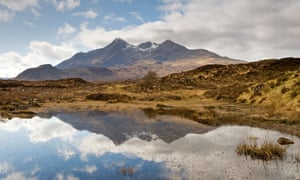
Length: 12 miles
Time: 6 hours
Start/finish: Sligachan
Grade: Moderate
Refuel: Sligachan Hotel
Sligachan is a sea loch, a middle-of-nowhere hotel, and the most unforgettable glen in all Scotland. Unforgettable, because to walk there is to journey into a twilight world of hard rock and Celtic legend, and the sculptural glories of Scotland’s mountain masterpiece – the Cuillin. The Sligachan track takes a spectacular route between the superb peaks of Marsco on your left and Sgurr nan Gillean on your right.
The best low-level walk is to follow the glen south to Loch na Creitheach, tranquil but sensationally situated under the south ridge of the Cuillin’s aloof outlier, Blà Bheinn. Then just walk back the way you came. If luck is with you, a sprinkling of snow will embellish the peaks and stags will roar in the dusk.
Seumas’ Bar in the Sligachan Hotel (doubles from £60pp B&B) has been chosen Scotland’s Whisky Bar of the Year for three consecutive years and has 400 single malts. It also sells craft beers from the adjacent Cuillin Brewery. Freshly landed seafood is a speciality, as is venison pie.

